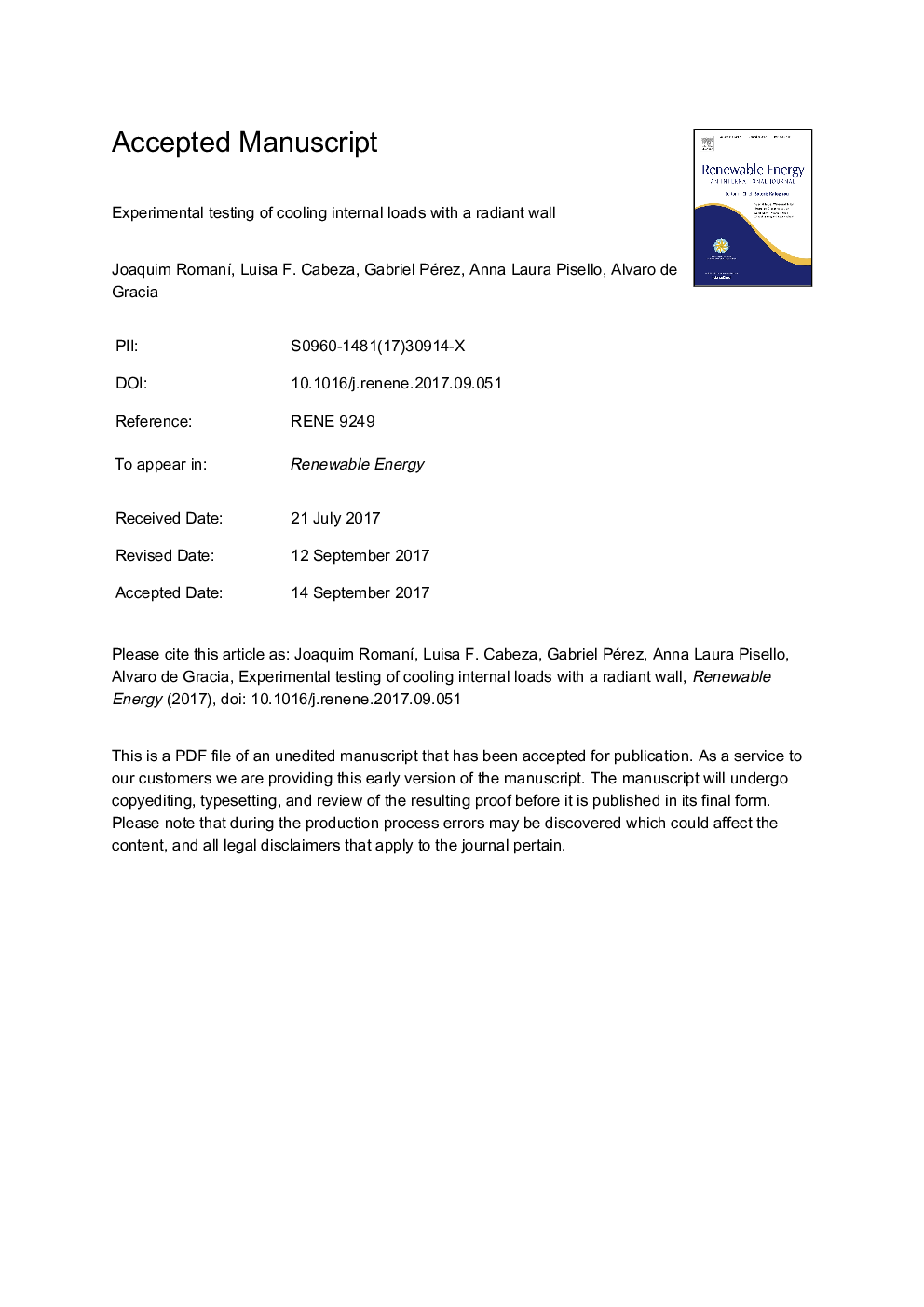| Article ID | Journal | Published Year | Pages | File Type |
|---|---|---|---|---|
| 4925877 | Renewable Energy | 2018 | 23 Pages |
Abstract
Thermally activated building systems (TABS) consist of pipes or ducts embedded in the building structure. This is a well-known technology for its capability to reduce energy use for cooling buildings. Additionally, TABS help integrating renewable energies, such as free-cooling with ground heat exchangers (GHE). However, TABS cooling load is sensitive to the internal load, and the use of GHE for free-cooling is limited to low energy buildings. In a previously published research, a radiant wall cubicle without internal gains demonstrated to achieve significant energy savings. However, the current research showed that under domestic and office scheduled internal gains equivalent to 42 W mâ2 the radiant cubicle increased its energy consumption for cooling more than the reference cubicle with air-to-air heat pumps. As a result, the radiant cubicle used around 20% more energy than the reference at air temperature set-point 24 °C but saved around 20% compared to the reference at 26 °C. Despite this, the radiant wall could still reduce the cooling cost through peak load shifting even though it showed to consume more energy than a conventional HP.
Keywords
Related Topics
Physical Sciences and Engineering
Energy
Renewable Energy, Sustainability and the Environment
Authors
Joaquim RomanÃ, Luisa F. Cabeza, Gabriel Pérez, Anna Laura Pisello, Alvaro de Gracia,
